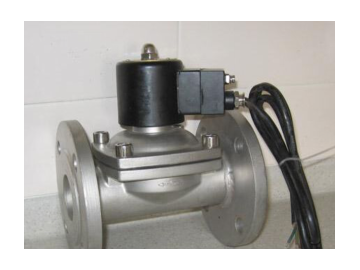Application
Steam (Liquid) Electromagnetic Valve is an actuator used in industrial process automation control systems. It can automatically open or close the valve upon receiving an electric control signal, achieving control over the flow or flow rate of fluid media in pipelines, thereby automatically adjusting or remotely controlling parameters such as temperature, flow rate, and pressure in the system.
This series of electromagnetic valve products can be widely used in production and research departments such as textiles, printing, chemicals, plastics, rubber, pharmaceuticals, food, building materials, machinery, electrical equipment, surface treatment, and in daily life facilities such as bathrooms, cafeterias, and air conditioning. The ZQDF series is mainly used for controlling gaseous media such as air, steam, and natural gas; the electromagnetic valve is mainly used for liquid media such as tap water, distilled water, chilled brine, and electroplating waste liquid, and is also used for oils with a viscosity of less than 4°E.
Structural Features
Corrosion Resistant: The main components such as the valve plug and valve body are made of stainless steel and cast steel, providing good corrosion resistance.
Heat Resistant: The electromagnetic and sealing parts are made of special high-temperature resistant electrical materials and sealing materials, and effective heat insulation measures are adopted.
Wear Resistant: Reasonable material selection, the lubrication effect of the fluid between the valve plug and valve body reduces wear.
Condensation Resistant: The condensate in the steam pipeline is an important factor affecting the operation of the steam electromagnetic valve; this valve is unaffected by condensate.
Structure and Principle
This valve is a step-action direct acting solenoid valve, which can be divided into normally closed and normally open solenoid valves based on their state when power is off. In the normally closed solenoid valve, when the coil is energized, the armature is first driven by electromagnetic force to lift the auxiliary valve plug, allowing the fluid on the main valve cup to flow away through the auxiliary valve, reducing the pressure on the main valve cup. When the pressure on the main valve cup decreases to a certain value, the armature drives the main valve cup to open, allowing the medium to flow. When the coil is de-energized, the electromagnetic force disappears, and the armature falls back to its original position due to its weight. At the same time, relying on the medium pressure, the main and auxiliary valves are tightly closed. In the normally open solenoid valve, when the coil is energized, due to the suction force, the moving iron core descends, pressing down the auxiliary valve plug, closing the auxiliary valve, and the pressure inside the main valve cup rises. When the pressure reaches a certain value, the pressure difference above and below the main valve cup is the same; due to the electromagnetic force, the moving iron core pushes the main valve cup down, tightly pressing against the main valve seat, thus closing the valve. When the coil is de-energized, the electromagnetic suction force is zero, and the auxiliary valve plug and the moving iron core are lifted upward due to the spring action, opening the auxiliary valve. The fluid on the main valve cup flows away through the auxiliary valve, reducing the pressure on the main valve cup. When the pressure on the main valve cup decreases to a certain value, the pressure difference pushes the main valve cup upward, opening the main valve and allowing the medium to flow.













